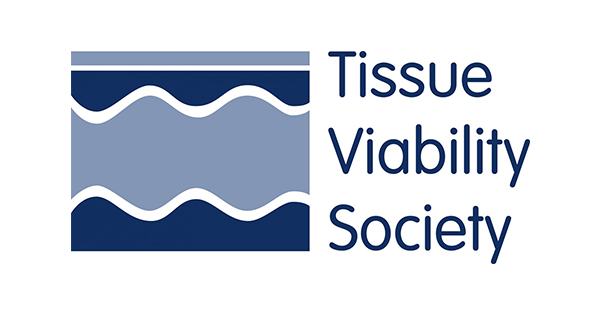I picked up a friend from Cambridge train station and we passed the sunny drive catching up and sharing our expectations for the days ahead. The rolling hills and sandstone announced we were in Yorkshire, and after getting settled in our hotels, we headed for the conference centre.
I had known for some time I might be presenting in Harrogate and was quite honestly filled with more dread than excitement. It was my first time attending and presenting too. The atmosphere was warm and friendly, with special arrangements made to welcome first time attendees and those travelling alone. Much of my nerves were eased as I soaked up the atmosphere, and the welcome from Jacqui Fletcher and Leanne Atkin prompted us all to take care of ourselves, and to remind us of the value of our work. Jacqui did all this with a newly broken ankle, which just shows her dedication. This shone through in her session on anatomy, which included short recordings from a dissection to show the layers of the skin and tissues in various parts of the body. This was one of the highlights of the conference for me — it was fascinating.
The themes of caring for ourselves and inclusivity were woven throughout the event. Many speakers highlighted neurodiversity and there was a focus on assessment of wounds in dark skin tones.
The free Whova app displayed the entire conference programme and made planning your time and messaging other attendees really easy.
If you have never attended the Wounds UK conference before, I would advise keeping it in mind how tiring a conference can be. It’s long days on your feet and there is so much to learn. Take time to rest when you need to. It is never possible to see everything you would like, as there are so many excellent speakers and workshops.
A friend and I took half an hour out to go for drink in a nearby café and make a plan for what to see for the rest of the afternoon. Harrogate had its first smattering of Christmas lights up and was twinkling beautifully.
In addition to the presentations in the auditorium, there is the exhibition, where you can see new innovations demonstrated by industry and speak with representatives about their products. There are also the Made Easy workshops, run in small groups, a welcome break from the lights and bustle in the exhibition. In the workshops, you have ample opportunity to ask questions, and there was often debate among the audience too, a great opportunity to get to know clinicians from around the UK. There were workshops on varied topics, including chemical debridement, surgical wound dehiscence and emollients.
On Wednesday morning, the free papers were presented. This is a great opportunity to feature projects or improvements from your own practice.
I will highlight some of the sessions which have really stayed with me. This includes an informal and, at times, deeply moving session on paediatric wound care, sessions on the management of the diabetic foot which were illuminating, and a very useful presentation on malignant wounds, an area of wound care in which I had lacked confidence.
Likewise, the care of paediatrics is an area many nurses who are adult-trained find challenging in wound care. There is limited evidence and clarity into which dressings and topical treatments are safe and effective for this population (Best Practice Statement, 2024). The session ‘A-dressing the issues in paediatric wound care’ was led by the tissue viability nurses from Great Ormond Street (GOSH) and NHS Greater Glasgow and Clyde. This included case studies from patients that the teams had worked closely with for a long period of time, and it demonstrated how vital the relationship is between children, their family and clinicians. The bravery of the children in coping with the challenges they faced was very affecting for all of us in the audience. The Best Practice Statement introduced in the session also echoes the need for holistic care, and the importance of finding means of communicating age appropriately to engage even very young patients in their care (Best Practice Statement, 2024). Rachel Allaway, Lead Tissue Viability Clinical Nurse Specialist at GOSH, ended the discussion with a rallying call to all of us to urge industry to not only make clear the safe age range for use with every product, but also to make smaller dressings to cater for the paediatric population.
The two sessions focusing on infection in the diabetic foot were fascinating, and the presenters introduced a consensus document Demystifying infection in the diabetic foot (Fletcher et al, 2024). The aim of the document is to support all practitioners in developing the ability to identify diabetic foot infection (DFI), and the confidence to escalate where appropriate. The authors highlight that the usual signs of local infection can be masked in the diabetic foot, due to neuropathy, peripheral arterial disease and a dampened immune response, and there is helpful guidance in detecting infection in dark skin tones (Fletcher et al, 2024). The presentation and consensus document detail some of the less common or subtler signs of DFI, such as that some bacteria cause crepitus that may be evident on palpation, pyrexia will not necessarily be present with DFI, and that DFI can lead to gangrene, even without the presence of arterial disease (Fletcher et al, 2024). Such knowledge is vital for community nursing teams, as there may be no other clinician regularly reviewing our diabetic patients, and DFI needs to be acted on immediately.
The session on caring for patients with malignant wounds also introduced a consensus document, Malignant wounds: management in practice (Ousey et al, 2024). Malignant wounds, as the authors posit, are psychologically and emotionally challenging for patients, their loved ones and clinicians (Ousey et al, 2024). This session and the document provide really helpful practical advice. The guidance on managing infection and dressing choice in fungating wounds I have already put into practice with a patient recently, who had a rapidly deteriorating fungating wound to the breast and axilla, it helped the team to develop a plan which minimised her distress and maximised comfort at end of life.
My presentation on sickle cell leg ulcers, was not until Tuesday afternoon, so I tried to put it out of my mind as I enjoyed the opportunities to meet colleagues and industry partners and learn from their expertise (Leigh and Downie, 2024). I gathered some tips to calm my nerves, which I will share for anyone who is facing their first time presenting. Firstly, do not picture your audience naked, as one TVN friend suggested! I would absolutely not feel more relaxed to see my mentors and colleagues sat in only their socks. Put that from your mind immediately! During a discussion over dinner on the Monday night, one of the team at Creed Health advised breathing is key — breathe in, hold, and then out again. I practised this throughout Tuesday, and I found it had a good effect. Once of my best friends is a retired ballerina and she also advocated for focusing on your breath, as steady breathing makes for a steady delivery, and finally, choose one person you know, picture them, and talk only to them. Following only the latter two’s advice, I was calm and ready for my presentation, it was chaired by Leanne Atkin who was very supportive, and it was over in no time at all, and then it was time for the gala dinner.
I would absolutely recommend attending Wounds UK to anyone thinking about it for 2025. There are bursaries available to pay for your accommodation. You will learn so much, both from the presentations and the exhibitors, and it is so reassuring to meet colleagues and discover we are all facing similar challenges, and how others have overcome them.
It is also a lot of fun, I won’t forget dancing all night at the gala dinner until it closed, the theme was Hollywood glamour, and there were a lot of sequins on show. If you get the chance to speak or present a poster, I would urge you to do it. As Fiona Downie, senior lecturer at ARU and my co-author, said to me, if you can improve the care for just one patient, then it is all worth it.







